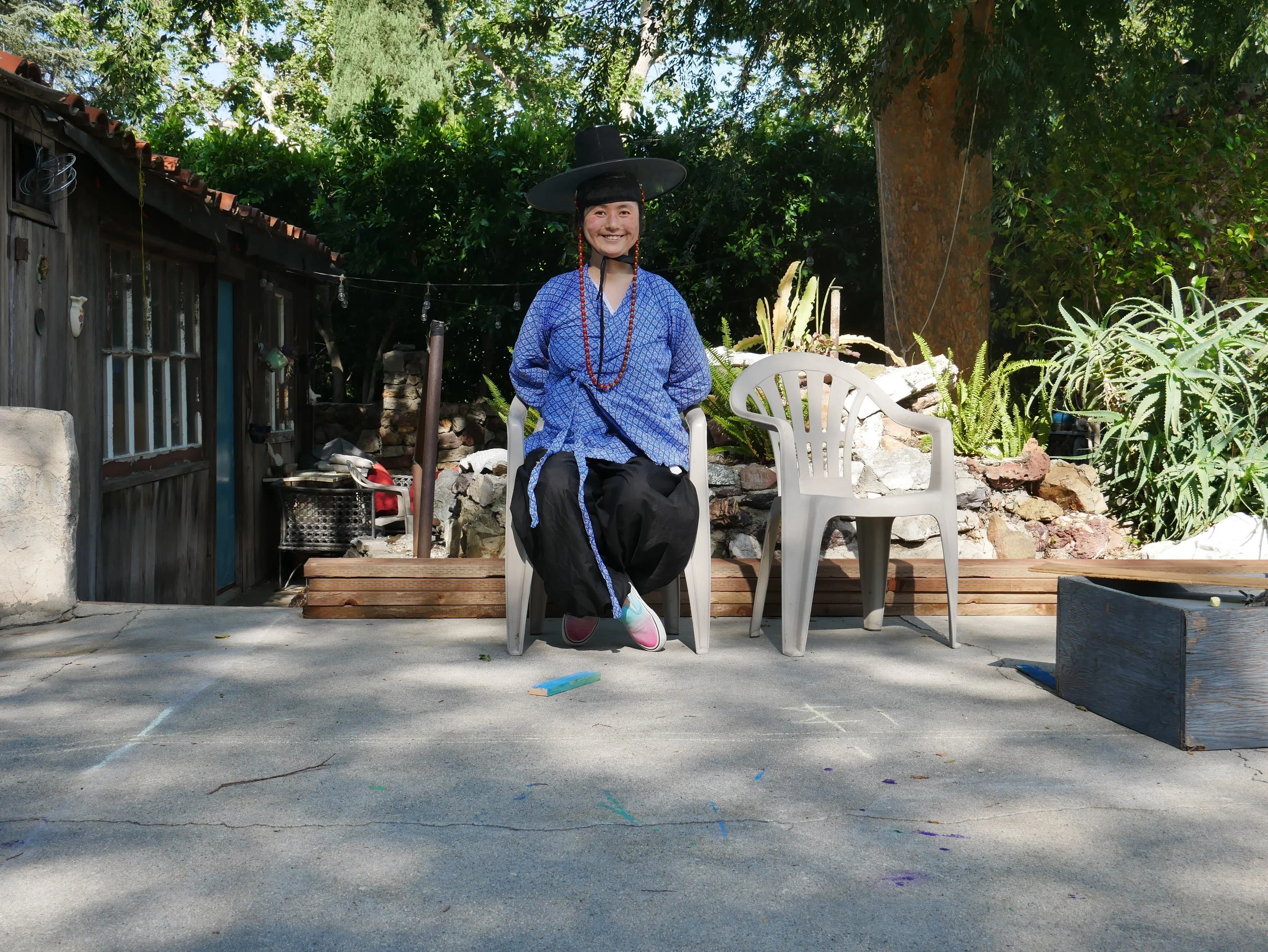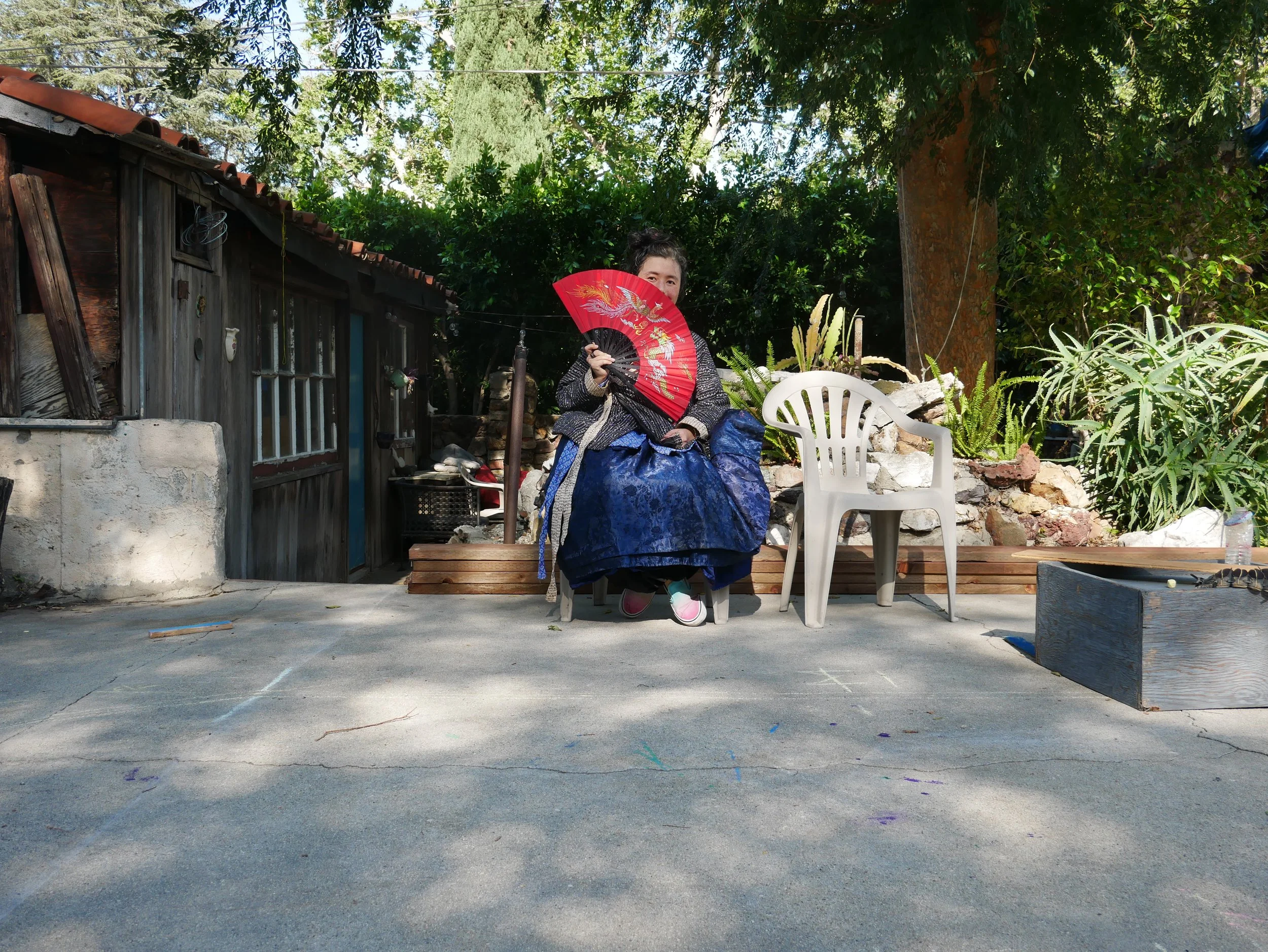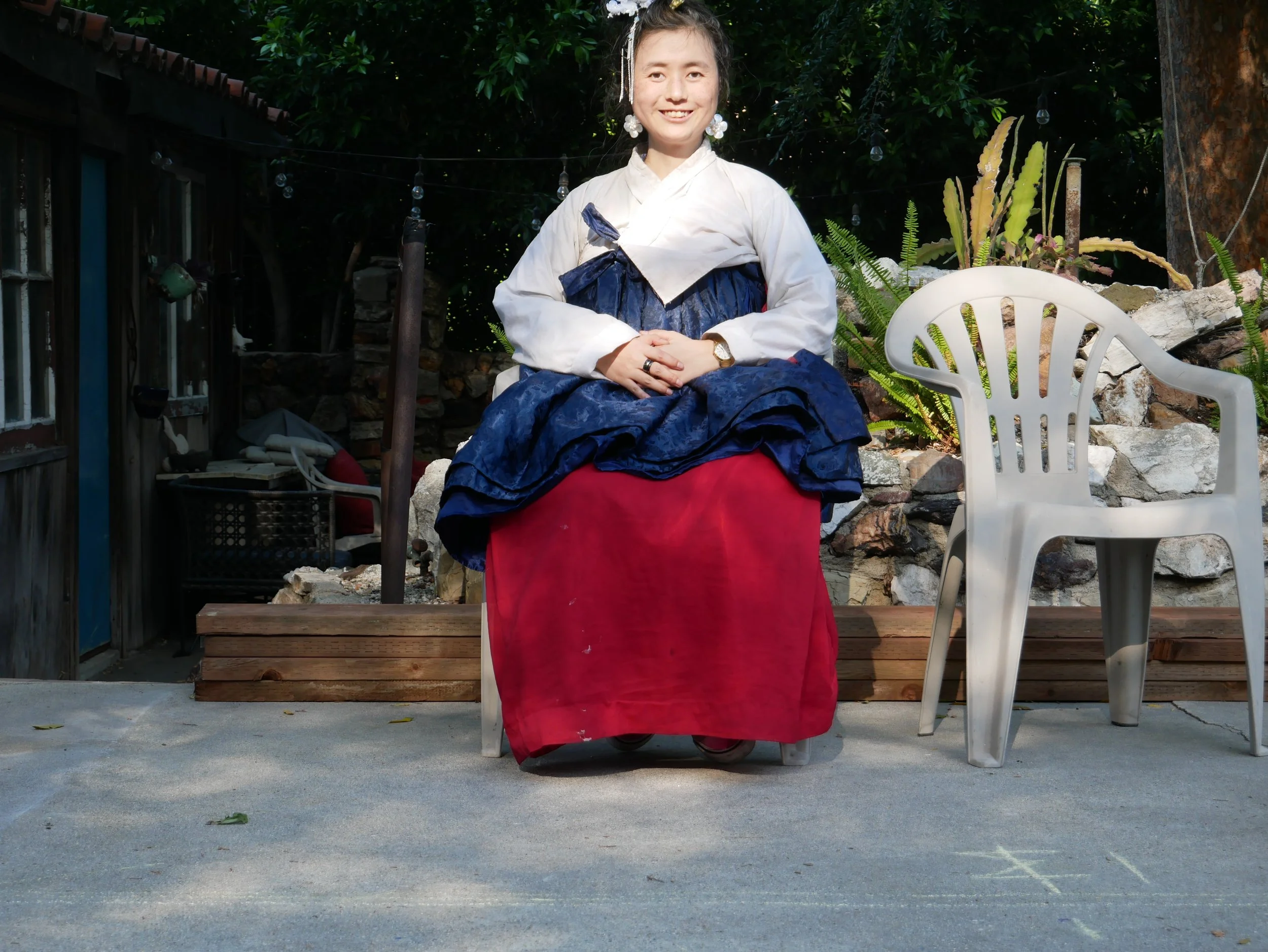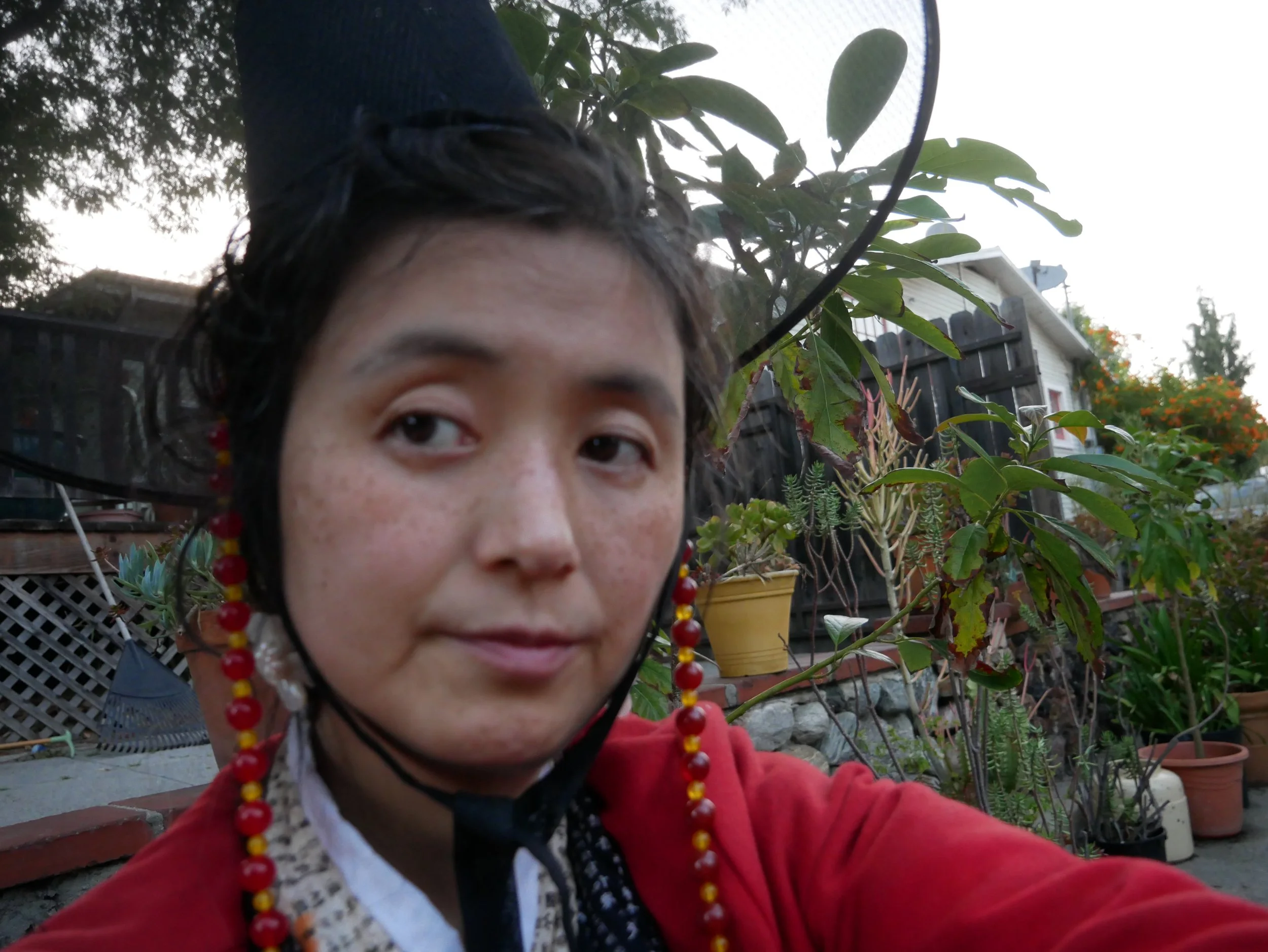I was taking an anthropology class with another person who was nonbinary. At the time I already knew I was aro spec and ace spec, but still getting to grips with it. I casually mentioned to them that I really didn't get “gender” as a rigid binary and they lit up and said, “Exactly! That’s how I feel.”
This was before COVID.
Before this conversation, I had desperately tried to double down on my femininity, but I found it exhausting. People around me kept saying I wasn’t feminine enough, didn't try hard to fit this ideal. And the conversations women had about how to be a woman seemed so alien to me.
In the silence of COVID, there was a freedom that I could do as I wanted with my clothing and my expression I had not had. Without the pressures of society, I found myself fluxing and being fluid about my gender. There were days I could and wanted to wear feminine makeup, but other days where the thought was atrocious. And I kept wriggling in and out of skirts during the day, staring at why I was doing that. I tried so hard to blame Korea, my adoption, my upbringing, and say to myself that I was a Tom girl, but that conversation with my classmate kept ringing in my ears and other memories from my childhood that confirmed it.
I was also exploring my Koreanness, and gradually over the last few years, I’d been making hanbok and wearing them in public more and more. They were so comfy, and got rid of some of the feeling of being constantly stared at for the wrong reasons. They became my expression, my solidarity, but I wanted hanbok to also reflect that feeling of what I felt inside. I wanted to know if I could make it into a masterpiece of nonbinary art.
So first, for those who don’t know, the traditional hanbok is made of several pieces.
Those are:
Paji: The pants. These are baggy pants that were traditionally tied at the hip. They could be made of ramie, cotton, or silk.
Chima: This is the skirt portion worn by women and male musin during Korean shamanistic ceremonies. Traditionally it is a wrap skirt overlapping in the back. The overlap originally was put there to make it easier to go to the bathroom and to go horse riding. Since Koreans rarely ever ride horses, it’s retained in some versions merely for the tradition. The modernized version is sewed up, but is marked by being tied in a similar fashion to the traditional chima.
Jeogori: This is the top. The Jeogori is different for men and women. The men’s one is longer. And the Joseon version of the woman’s after Mid-Joseon is shorter. But they used to be the same no matter what the sex.
Sokpaji: Traditionally under the chima for women, which means loosely bloomers. (There might be several layers for yangban (Nobility) women).
Through a lot of research, I found that older hanbok were more genderfluid. Many of the pieces were worn equally by men and women. In fact, many musin, or Korean shamans, purposefully wore androgynous hanbok. There are hanbok redesigns that fit contemporary androgynous ideals, or tried to make them more business-like. But none of them acknowledge genderfluidity or gender flux. Korea was still behind on re-updating ideas of gender and restoring some of the gender flexibility it had before Joseon.
Yoonmi sitting in black paji, with mangeon (The gat headband, black with donut jade near ears), gatkeun (Beads that hang from gat), gat (A type of hat traditionally made out of horsehair. This is an approximate since a real one costs more than a car.), and just past the hips patterned blue Jeogori.
Yoonmi is wearing a black and white hangeul Jeogori, an open red folding fan covering face, only wearing the mangeon, and has a skirt over the paji.
I thought hard about it and found a way to make the whole outfit flexible so it could have any gender expression I wanted and still express my heart as a Korean. I did betray the original Korean design by adding pockets 80% larger than a man’s pockets.
The two keys I focused on was the ability to layer different gendered clothes together and pockets. I handsewed without a sewing machine all of the pieces and patterned loosely from traditional patterns.
The skirt has transformed into a jumper, so the paji are more visible, indicating more of a in between state. The jeogori is the same. The jumper skirt that’s transformed is covered by a second shorter Jeogori, thus expressing a more feminine state, but still has the paji visible which represents the masculine.
A longer chima—more traditional with sheer organza over skirt has gone under the jumper-transformed skirt. The paji are no longer visible. This represents a more feminine state and allows for layering.
With each look, one can flux and make fluid anything . . . the skirt can be removed, covered, moved up or down.
The full length chima can be used or taken off.
With multiple jeogori both masculine and feminine types, items can be added or removed throughout the day. What gender the wearer is feeling can be expressed through layering and easy removal of items without compromising the design.
And lastly, the pockets which are by design 80% larger than a man’s to get revenge on men shrinking pockets for everyone else, I hid between the seams of many of the items. Convenient, but not visible. And on and in everything. Because if you’re going to make custom clothes, include pockets. The only item I did not add it to was the shortened Jeogori.
The white earrings, the fan, the Vans shoes which express nonbinary identity through their colors and the gat itself were not made by me. However, everything else was either made by me from scratch or modified, such as the hairpins.
I found that a lot of my dysphoria, about my body, my image, and self was managed by simply wearing hanbok of different types and allowing myself to flux and be fluid in whatever way I pleased. It was easy to have a male or female or in-between silhouette. Because hanbok, by nature, are naturally loose fitting, any self-consciousness about outside stares I had melted away. I think that one can also reimagine clothes from history by thinking about layering, or one’s own ethnicity to do the same. A little imagination, layering, revenge on small pockets and patience can make it work.





